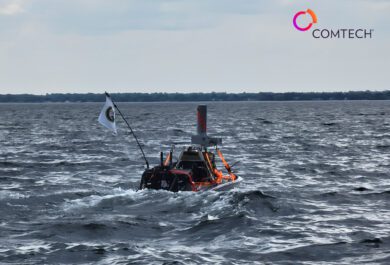Satellite communications are not only a major part of our business, but foundational to Comtech as a company, and two things are currently true about this market: it is evolving, and, as a function of that evolution, it’s growing.
Let’s first look at how satellite communications is evolving as an industry. One of the biggest use cases for satellite technology is defense, and Comtech has been proudly working with the U.S. Department of Defense (DoD) for years. The threat environment today has changed drastically with the introduction of more sophisticated methods of attack on communications, including cyber warfare. As a result, defense organizations are moving away from large, fixed legacy communications systems to alternatives that are more agile and distributed, so that they have multiple networks to route data traffic through anywhere, at any time. These flexible and resilient systems are key to keeping communication flow open and uninterrupted under extreme conditions, when it matters most.
As a result, there has been a growing need for digital ground station infrastructure and multi-orbit constellations, inclusive of Low, Medium and Geostationary Earth Orbit (LEO, MEO, GEO) satellites. Other solutions, such as troposcatter technology, can also help bridge the gap between legacy and new systems, moving from network-centric infrastructures to highly distributed, data-centric models.
What does this mean for our business? It means more opportunity in a growing market. Take the LEO market as an example. On its own, it is worth an estimated $5.4 billion now. Projections anticipate growth to over $25 billion by 2032, with North America projected to lead this growth. Additionally, the Canadian government also recently invested several billion dollars to support the advancement of LEO satellite networks.
While defense is an obvious application, LEO technology also demonstrates the commercial appeal of modern satellite solutions as well: LEO satellites are key to establishing the connectivity we need for everyday activities such as monitoring weather forecasts or helping connected devices reliably operate via mobile broadband. This kind of application is demonstrative of the high potential inherent in the military-to-civilian innovation cycle, as technology traditionally used by the government finds a variety of downstream applications in the commercial sector.
Aside from LEO as an example, we’ve also recently discussed the growing satellite ground station market, and how it is projected to grow to $6.6 trillion by 2028 – expanding at a 6.89% CAGR beginning this year. As mentioned above, solutions that fall in this space – such as troposcatter and VSAT technologies – are key to bringing legacy and modern infrastructures together, and provide the flexibility organizations, defense or otherwise, need to establish communications in difficult and ever-changing environments.
We’re constantly innovating to modernize communications architecture, and make it more dependable and adaptable to meet our customers’ modern-day needs. A great illustration of this is the new digital common ground modem product line we announced in September to support the DoD and coalition partners in establishing interoperability with hybrid networks. We believe this product line has multiple applications, and we are only at the beginning of a demand cycle that will be driven by new technologies.
At Comtech, we understand the importance of continued information flow, whether it’s sharing tactics across a battlefield or allowing our smartphones to connect from around the world, and we’re thrilled to see the satellite market continue to reach new heights. We’re already well-established and ready to capture more opportunities – just take a look at the Satellite & Space wins we have from the last year alone. Stay tuned for more exciting news about the satellite industry.
Forward-Looking Statements
Certain information in this blog post contains statements that are forward-looking in nature and involve certain significant risks and uncertainties. Actual results and performance could differ materially from such forward-looking information. The Company’s Securities and Exchange Commission filings identify many such risks and uncertainties. Any forward-looking information in this press release is qualified in its entirety by the risks and uncertainties described in such Securities and Exchange Commission filings.


